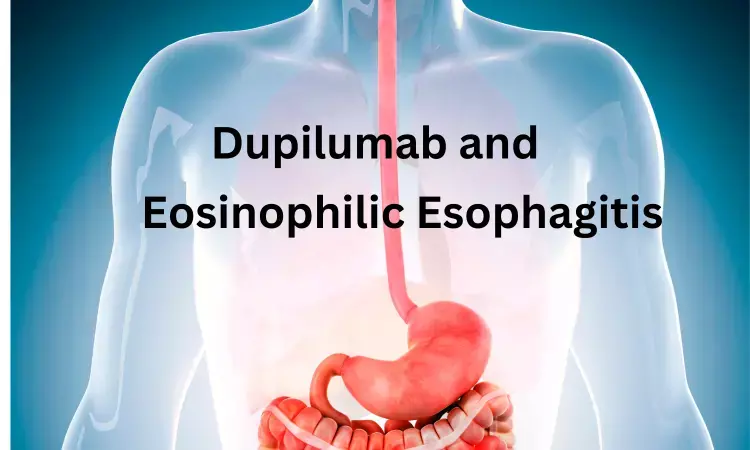- Home
- Medical news & Guidelines
- Anesthesiology
- Cardiology and CTVS
- Critical Care
- Dentistry
- Dermatology
- Diabetes and Endocrinology
- ENT
- Gastroenterology
- Medicine
- Nephrology
- Neurology
- Obstretics-Gynaecology
- Oncology
- Ophthalmology
- Orthopaedics
- Pediatrics-Neonatology
- Psychiatry
- Pulmonology
- Radiology
- Surgery
- Urology
- Laboratory Medicine
- Diet
- Nursing
- Paramedical
- Physiotherapy
- Health news
- Fact Check
- Bone Health Fact Check
- Brain Health Fact Check
- Cancer Related Fact Check
- Child Care Fact Check
- Dental and oral health fact check
- Diabetes and metabolic health fact check
- Diet and Nutrition Fact Check
- Eye and ENT Care Fact Check
- Fitness fact check
- Gut health fact check
- Heart health fact check
- Kidney health fact check
- Medical education fact check
- Men's health fact check
- Respiratory fact check
- Skin and hair care fact check
- Vaccine and Immunization fact check
- Women's health fact check
- AYUSH
- State News
- Andaman and Nicobar Islands
- Andhra Pradesh
- Arunachal Pradesh
- Assam
- Bihar
- Chandigarh
- Chattisgarh
- Dadra and Nagar Haveli
- Daman and Diu
- Delhi
- Goa
- Gujarat
- Haryana
- Himachal Pradesh
- Jammu & Kashmir
- Jharkhand
- Karnataka
- Kerala
- Ladakh
- Lakshadweep
- Madhya Pradesh
- Maharashtra
- Manipur
- Meghalaya
- Mizoram
- Nagaland
- Odisha
- Puducherry
- Punjab
- Rajasthan
- Sikkim
- Tamil Nadu
- Telangana
- Tripura
- Uttar Pradesh
- Uttrakhand
- West Bengal
- Medical Education
- Industry
Higher-exposure to dupilumab may effect weight gain among children with eosinophilic esophagitis

Dupilumab is a popular drug commonly marketed as Dupixent. It was first approved by the FDA in 2017 and is currently used to treat atopic dermatitis, asthma as an add-on maintenance treatment, chronic rhinosinusitis with nasal polyposis, and eosinophilic esophagitis.
A recent trial presented in American college of Gasteroenterology Annual Meeting reveals that treatment with higher-exposure dupilumab (Dupixent) showed sustained improvements in the reduction of peak esophageal intraepithelial eosinophil counts among children ages 1 to 11 with eosinophilic esophagitis (EoE), over long-term.
The study was a randomized, double-blind, placebo-controlled study, EoE KIDS that assessed the safety and efficacy of dupilumab compared to placebo in pediatric patients with active EoE. The study included, patients of age 1–11 years, unresponsive to ≥8 weeks of proton pump inhibitor treatment, have peak intraepithelial eosinophilic count ≥15 eos/hpf in at least 2 esophageal regions, and have symptoms of EoE in the month prior to screening. In total, 102 patients were enrolled in the study.1
The 3-part trial includes a 16-week placebo-controlled treatment period (Part A), a 36-week extended active treatment period (Part B), and a 108-week open-label extension period (Part C). In Part A, participants were randomized in a 2:2:1:1 ratio to receive weight-tiered, subcutaneous dupilumab on a higher-exposure or lower-exposure regimen, or placebo. Following a 12-week screening period, 37 participants were assigned to higher-exposure dupilumab, 31 to lower-exposure dupilumab, and 34 to placebo.
The key findings of the study are
• In the higher-exposure dupilumab group, 24.3% of participants were female and the mean age was 6.8 (Standard deviation [SD], 3.1) years.
• In the placebo group, 26.5% of participants were female and the mean age was 7.2 (SD, 3.0) years. Investigators pointed out both groups had an increased level of atopic comorbidities (94.1% placebo versus 100% dupilumab).
• On analysis, the higher-exposure dupilumab group met the primary endpoint of peak esophageal intraepithelial eosinophil (eos) count ≤6 eos/high-power field (hpf) compared to placebo at week 16 (least squares mean difference vs placebo, 64.5; 95% confidence interval [CI], 48.19-80.85; P < .0001).
• At week 52, 62.9% of participants receiving higher-exposure dupilumab in Parts A and B and 52.9% of participants who switched from placebo in Part A to higher-exposure dupilumab in Part B achieved peak eos/hpf ≤6.1
• At week 16, adverse events including COVID-19, rash, headache, and injection site erythema were more frequent among participants taking dupilumab compared to those taking placebo. Investigators noted the safety profile was similar through week 52.
“Higher-exposure dupilumab met the primary endpoint of peak esophageal intraepithelial count ≤6 eos/hpf vs placebo and demonstrated significant and clinically meaningful changes in histologic and endoscopic outcomes, and improvements in clinical symptoms and rate of weight gain. Benefits were maintained or increased to week 52 with continued treatment,” concluded investigators.
Reference: Chehad M, Dellon ES, Spergel JM, et al. 373 - Dupilumab Improves Histologic and Endoscopic Aspects of Eosinophilic Esophagitis (EoE), as Well as Rate of Weight Gain, in Children Aged 1 to <12 years: 52-week Results From the Phase 3 EoE KIDS Trial. Paper presented at: ACG 2023 Annual Scientific Meeting. Vancouver, Canada. October 20 – 25, 2023.
MSc. Neuroscience
Niveditha Subramani a MSc. Neuroscience (Faculty of Medicine) graduate from University of Madras, Chennai. Ambitious in Neuro research having worked in motor diseases and neuron apoptosis is interested in more of new upcoming research and their advancement in field of medicine. She has an engrossed skill towards writing and her roles at Medical dialogue include Sr. Content writer. Her news covers new discoveries and updates in field of medicine. She can be reached at editorial@medicaldialogues.in
Dr Kamal Kant Kohli-MBBS, DTCD- a chest specialist with more than 30 years of practice and a flair for writing clinical articles, Dr Kamal Kant Kohli joined Medical Dialogues as a Chief Editor of Medical News. Besides writing articles, as an editor, he proofreads and verifies all the medical content published on Medical Dialogues including those coming from journals, studies,medical conferences,guidelines etc. Email: drkohli@medicaldialogues.in. Contact no. 011-43720751


